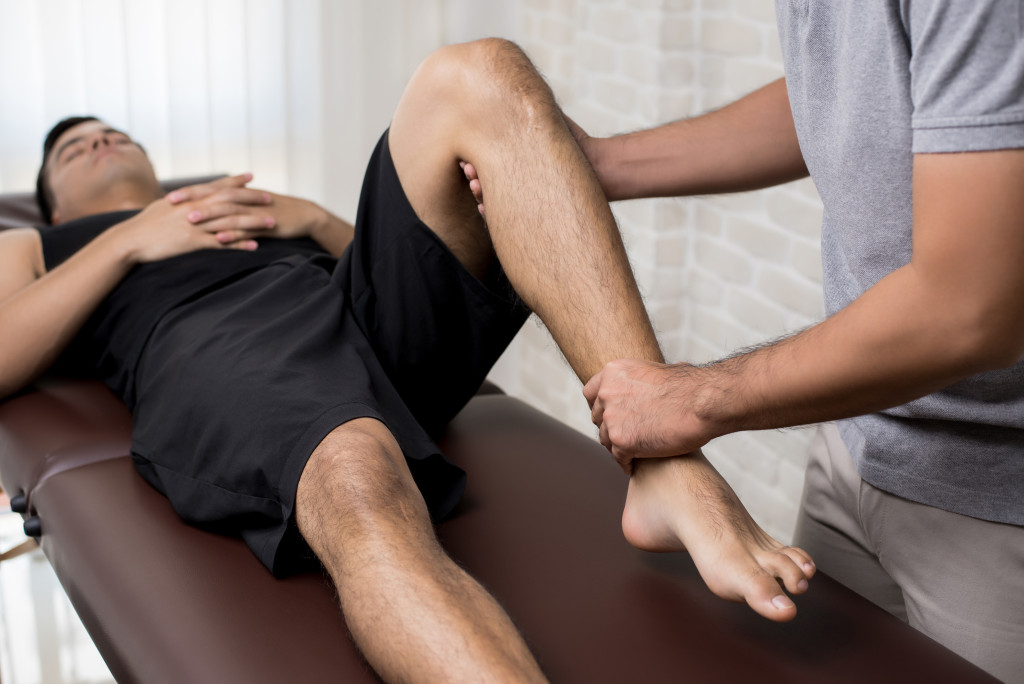Hip replacement surgeries are one of the most common procedures in the United States. Annually, at least 450,000 people go through it. Although the surgery is risky, patients can take steps to ensure they can recover quickly.
1. Get Some Help to Move Around
Usually, patients with hip replacement surgery can start walking the day after the procedure. Around a month after, they can go back to their regular activities.
However, the recovery duration and process can still differ between individuals. Some may require professional help for mobility. Those who prefer to recover by themselves can request a home health aide specializing in post-operative care to assist them during the early stages of the rehabilitation process.
They might also need a:
- Physical therapist, to help them learn exercises for strengthening the hip and leg muscles.
- Occupational therapist, to teach them how to perform daily activities when they get home, such as bathing themselves or preparing meals.
- Social worker, to assess their home environment and determine what else they may need to recover successfully.
2. Invest in Equipment and Supplies That Support Movement
Patients need to make their homes conducive to recovery, which means they should move around without increasing the risk of injuries and accidents. Investing in equipment and supplies that promote accessibility is the way to go. Some options include:
- Special Chair: This will make sitting more comfortable and more effortless movement around the house.
- Walking Aid: A cane or walker will help with balance and support when walking.
- Raised Toilet Seat: This will make using the bathroom more accessible, reducing the need for bending down.
- Grip Bars: These can be installed strategically around the house, such as in shower stalls and near toilet seats. This will make standing and walking much safer for patients who still feel weak.
3. Perform Exercises that Stretch the Hip Flexors and Hamstrings

Physical therapists usually recommend two sets of exercises during recovery: a “before” set to practice in the days before going home and an “after” set that patients can do when they get home from the hospital.
The “before” set usually involves stretching the hip flexors and hamstrings, increasing the range of motion, and preparing the patient for walking.
The exercises can be performed as follows:
- Lie on your back with one knee bent and pull the other thigh toward your chest. Hold for 30 seconds and repeat three times on each side.
- Remain seated with one leg crossed over the other. Gently grab behind your thigh and pull it towards you for 30 seconds, releasing slowly. Repeat three times on each side.
- Sit on a chair or wheelchair with both feet flat on the ground. Put slight pressure on the heels to activate hamstring muscles while pushing down onto the balls of your feet. Hold for 30 seconds and then relax. Repeat three times.
4. Take Pain Medication as Prescribed
Some discomfort and pain are to be expected after surgery. However, if the pain is severe and lasts for more than a day or two, it is essential to speak to the doctor about increasing the dosage of pain medication prescribed.
It is also essential to take medication as directed. Some prescription pain tablets can be taken every four to six hours, while others require a more frequent dosage schedule. In other words, patients may have to take two pills in the morning and at night or one pill every three hours throughout a 12-hour period.
Every patient is different, and the number of painkillers they need to take after a hip replacement may vary from one person to another. They should also increase or decrease the dosage per their tolerance levels.
Patients should not skip doses to try and manage their medication intake by themselves as this can lead to adverse effects on the body. A good rule of thumb is to take the medication only when needed and follow medical instructions.
5. Maintain a Healthy Weight
Extra weight puts unnecessary stress on the hip and can slow down the healing process. Maintaining a healthy weight is an integral part of post-operative care, and patients should aim to stick to a balanced diet and regular exercise routine.
It is also important to avoid putting any extra stress on the joint, so activities such as running or jumping should be avoided. On the other hand, patients can perform low-impact exercises like cycling or swimming to strengthen muscles and increase cardiovascular activity.
Hip replacement is an effective surgical option with a high success rate, but it does not come without risks. Patients should adhere to recommended treatment protocols to maximize the chances of full recovery and prevent complications down the line.



